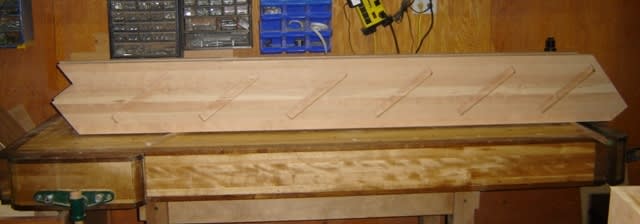fudgemen
Industrial
- Dec 6, 2019
- 4
Loosing my mind on this project. Someone please help
Im building a staircase. Open riser, 2 exposed stringers
First I built a 3.5" wide by 10.25" gluelam oak beam. its really solid, but i used urea PPR glue and my first 3 layers didnt have enough glue, i can see the glue joint is weak in those 3 lamination, it bugs me.
So i went and bought 4x10 structural #1 doug fir beams, planed them down to 3.5 x 9.75
The total rise is 122", total run is 168" so the total stringer length is about 16.5'
I dont want to get to detailed but basically im worried about deflection. There is going to be a glass railing attached to the floor, then to the stair treads, acting as a handrail.
I see from calc i get around 0.34 in deflection with a 50lb live and 15 lbs dead(3" thick white oak treads x 42" wide=heavy)
Every beam i use will get deflection, even an eng lvl.
Is this going to transfer down into the glass railing and put stress onto the glass? Or are the stand off glass fitting designed to allow movement/expansion?
Im building a staircase. Open riser, 2 exposed stringers
First I built a 3.5" wide by 10.25" gluelam oak beam. its really solid, but i used urea PPR glue and my first 3 layers didnt have enough glue, i can see the glue joint is weak in those 3 lamination, it bugs me.
So i went and bought 4x10 structural #1 doug fir beams, planed them down to 3.5 x 9.75
The total rise is 122", total run is 168" so the total stringer length is about 16.5'
I dont want to get to detailed but basically im worried about deflection. There is going to be a glass railing attached to the floor, then to the stair treads, acting as a handrail.
I see from calc i get around 0.34 in deflection with a 50lb live and 15 lbs dead(3" thick white oak treads x 42" wide=heavy)
Every beam i use will get deflection, even an eng lvl.
Is this going to transfer down into the glass railing and put stress onto the glass? Or are the stand off glass fitting designed to allow movement/expansion?


